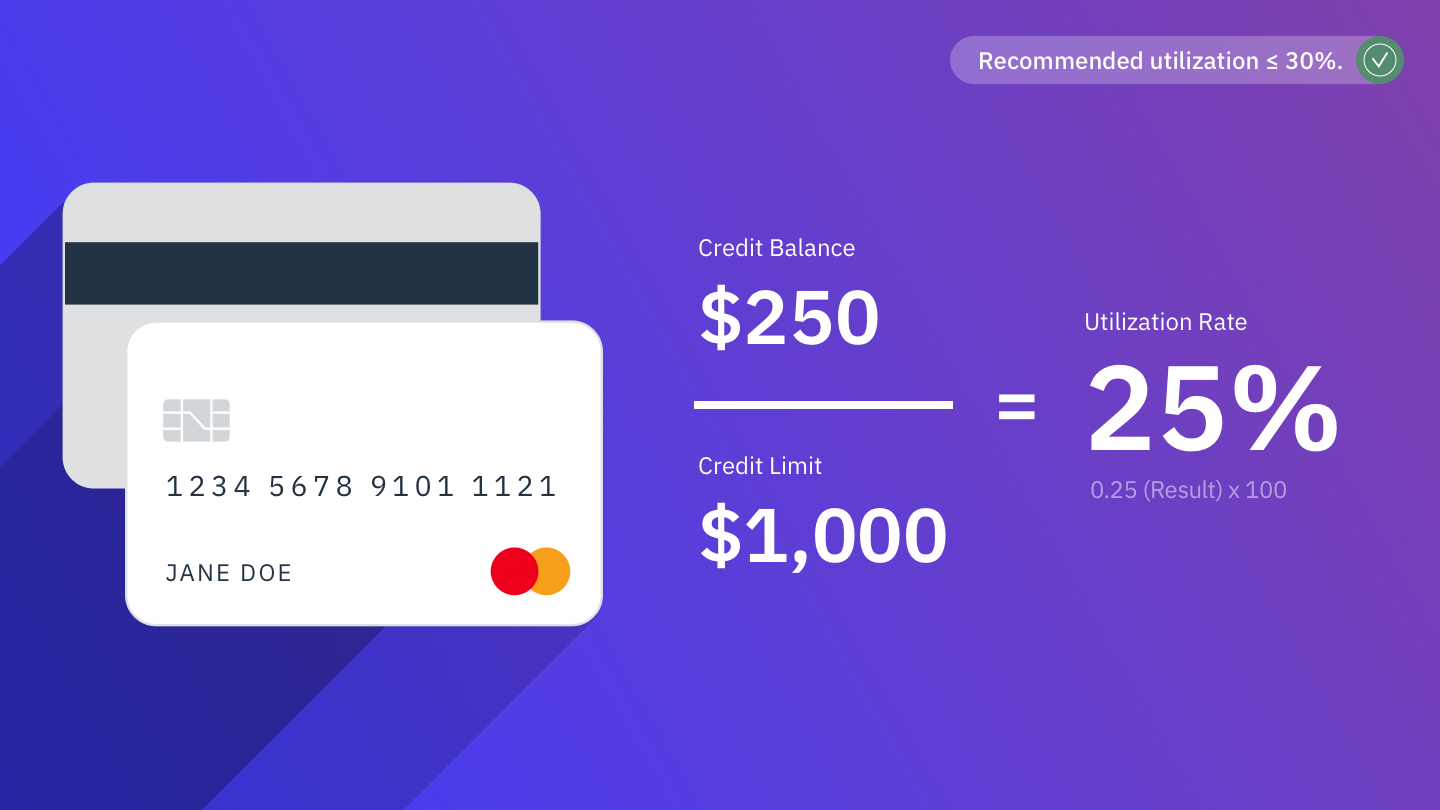Credit utilization is a fancy phrase that can have a pretty big impact on your credit. If you’re new to the term, read on for tips to calculate and manage your credit utilization ratio in this simple breakdown.
What is credit utilization?
When it comes to your credit, utilization is the amount of credit you use compared to the total amount of available credit you have. Here’s what that means. When you open a new credit line such as a credit card, there is typically a set cap on how much you can spend. For example, if you have a credit card limit of $1,000, then your ‘utilization’ is the ratio of your revolving balance as it compares to your 1K limit at the end of each billing cycle.
What is a good credit utilization ratio?
A good utilization rate is a revolving balance at or under 30% of your limit each month. Using the scenario above, 30% of a 1K limit would be $300. Therefore, if you’re looking to maintain exceptional credit, your balance should never exceed this $300 threshold. Furthermore, a good credit ratio isn’t necessarily about how much you spend. It’s about how much of a monthly balance you carry. For instance, if you charge all or most of your credit limit in a single billing cycle, it will only damage your credit if your end-of-month balance exceeds 30%, or $300. Additionally, anytime you pay off a balance in full, it could help you achieve better credit health.
How to calculate your credit utilization ratio
If you’re like most, crunching numbers probably isn’t at the top of your to-do list. However, calculating your utilization rate is actually pretty simple. First, take the total balance you spent and divide that number by your credit limit. Next, take that total and multiply it by 100 to get your percentage rate. Do this for each credit card or line of revolving credit you use to discover your utilization ratio percentage. To demonstrate, here is the utilization rate formula: total balance ÷ total credit limit = credit utilization x 100 = %. If you need help calculating your credit utilization ratio, you can use the tools in ScoreShuttle’s Challenger to determine your usage automatically.
Calculate My Credit Utilization Ratio
Tips to manage your credit utilization ratio
If your utilization ratio is too high, here are some tips to help you manage and improve your percentages.
- Keep tabs on how much you’re charging. Make a weekly budget and don’t spend more than you can afford.
- Set up payment reminders. Use autopay or set up payment reminders to ensure that you never miss a due date.
- Pay above the minimum amount due. For best credit results, pay your entire statement balance in full each month. If you have to carry a balance, strive to always pay more than the minimum amount due.
- Make payments twice a month. An extra mid-month payment is a great way to help you get closer to that 30% or under goal.
- Request an increase in your credit limit. If you remain at the same level of spending each month, having more available credit on the lines of credit you already have could help you lower your ratio.
- Avoid closing accounts. Closing an account won’t only decrease the amount of available credit in your name, but it may also reduce the number of years you’ve been building credit. Both of these scenarios could damage your scores.
In summary
The credit utilization guidelines above apply to all lines of revolving credit. This includes credit cards, some personal loans, or any line of credit that does not have a fixed number of payments. With this in mind, if you’re looking to maintain exceptional credit, be sure to keep your credit utilization ratio at or under 30% across the board.
Resources: [https://www.experian.com/blogs/ask-experian/credit-education/score-basics/credit-utilization-rate/]
Disclaimer: The content provided is for informational purposes only and not to give advice or guidance on credit improvement.



